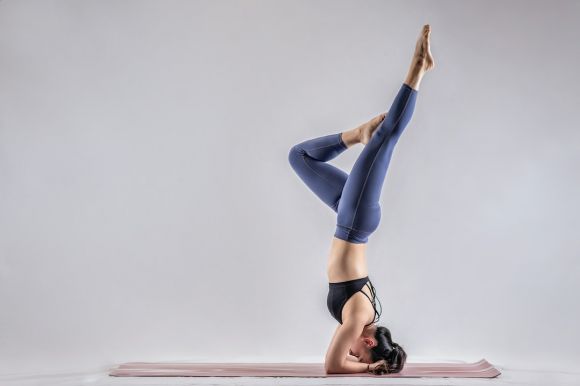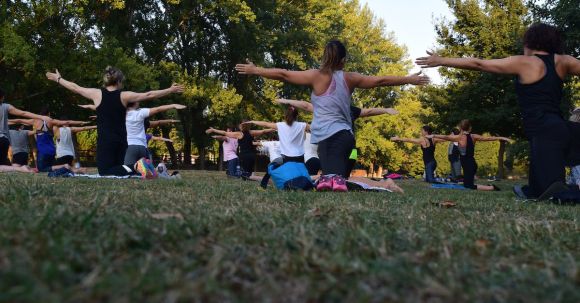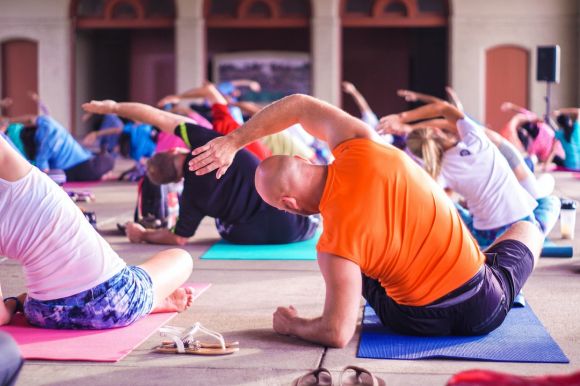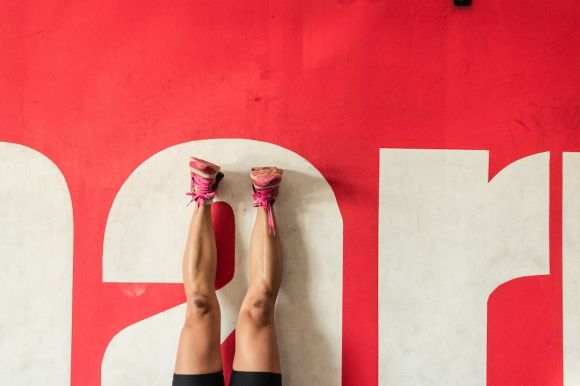Are you looking to take your athletic performance to the next level? If so, incorporating sports-specific exercises into your training routine can be a game-changer. These exercises are designed to target the specific movements, muscles, and skills required for your chosen sport, helping you become stronger, faster, and more efficient on the field or court. Whether you're a basketball player, a soccer enthusiast, or a tennis pro, here are some sports-specific exercises to help you develop your skills and reach your full potential.
Author: fit-on
Running endurance is a key factor in determining your overall performance as a runner. Whether you're a beginner or a seasoned athlete, improving your running endurance can help you run faster, go farther, and achieve your goals. In this article, we will explore some effective strategies to boost your running endurance and take your fitness to the next level.
Set Realistic Goals
Setting realistic goals is crucial when it comes to improving your running endurance. Start by assessing your current fitness level and establish achievable targets that are aligned with your abilities. Setting unrealistic goals can lead to frustration and burnout, which can hinder your progress. By setting attainable milestones, you can steadily work towards improving your running endurance without overwhelming yourself.Incorporate Interval Training
Interval training is a highly effective method to enhance your running endurance. This type of training involves alternating between high-intensity bursts of running and low-intensity recovery periods. By pushing yourself during the high-intensity intervals, you can increase your cardiovascular capacity and build endurance. Incorporate interval training into your running routine by including short sprints or fast-paced runs followed by slower recovery jogs.Gradually Increase Mileage
One of the keys to improving your running endurance is gradually increasing your mileage over time. Instead of attempting to run long distances right from the start, focus on gradually increasing your mileage each week. This gradual progression allows your body to adapt and build endurance without risking injury or burnout. Aim to increase your weekly mileage by no more than 10% to ensure a sustainable and safe improvement in your running endurance.Mix Up Your Training
To prevent boredom and keep your body challenged, it's important to mix up your training routine. Incorporate different types of workouts such as hill training, tempo runs, and long steady runs into your schedule. These variations not only help improve your running endurance but also target different muscle groups and improve overall fitness. By diversifying your training, you can continue to challenge yourself and make progress in your running endurance.Strength Training for Endurance
In addition to running, incorporating strength training into your routine can significantly improve your running endurance. Strength exercises such as squats, lunges, and planks help build muscular strength and stability, which can enhance your running performance. Focus on exercises that target your lower body, core, and upper body to improve overall strength and endurance. Aim to include strength training sessions into your weekly routine alongside your running workouts.Fuel Your Body Properly
Proper nutrition plays a crucial role in improving your running endurance. Ensure you fuel your body with a balanced diet that includes carbohydrates, protein, and healthy fats. Carbohydrates provide the necessary energy for long runs, while protein helps repair and build muscles. Additionally, staying hydrated before, during, and after your runs is essential to maintain optimal performance and endurance. Listen to your body's nutritional needs and make adjustments to your diet accordingly.Stay Consistent and Rest
Consistency is key when it comes to improving your running endurance. Stick to a regular training schedule and prioritize your runs. Consistency allows your body to adapt and gradually build endurance over time. However, it's equally important to give your body adequate rest and recovery. Rest days are essential to prevent overtraining and reduce the risk of injury. Incorporate rest days into your training schedule and listen to your body's cues for rest and recovery. In conclusion, improving your running endurance requires a combination of goal setting, interval training, gradual mileage increase, varied training, strength training, proper nutrition, and consistency. By implementing these strategies into your running routine, you can steadily improve your running endurance and achieve your fitness goals. Remember to listen to your body, stay motivated, and enjoy the journey of becoming a better, more enduring runner.
Achieving peak athletic performance is a goal for many individuals, whether they are professional athletes or fitness enthusiasts. While regular training and a well-rounded exercise routine are crucial for success, it is also possible to enhance athletic performance right from the comfort of your own home. In this article, we will explore a variety of home exercises that can help you improve your athletic abilities and take your performance to the next level.
Strength Training: Building a Solid Foundation
Strength training is a fundamental component of any exercise program aimed at improving athletic performance. By incorporating exercises that target major muscle groups, such as squats, lunges, push-ups, and planks, you can improve your overall strength, power, and stability. To target the lower body, incorporate exercises like squats and lunges into your routine. These exercises engage the quadriceps, hamstrings, glutes, and calves, helping to increase leg strength and improve explosiveness. For the upper body, exercises like push-ups and pull-ups are excellent for building upper body strength and enhancing performance in activities that require arm and shoulder strength.Plyometric Exercises: Boosting Power and Speed
Plyometric exercises are explosive movements that help improve power, speed, and agility. These exercises involve rapid muscle contractions, which enhance muscular strength and coordination. Some effective plyometric exercises that can be done at home include jump squats, burpees, box jumps, and medicine ball slams. Jump squats are a fantastic exercise for developing explosive power in the lower body. Start with your feet shoulder-width apart, lower into a squat position, and then explode upwards, jumping as high as you can. Land softly and repeat for multiple repetitions. Burpees are a full-body exercise that combines strength and cardio. Begin in a standing position, lower into a squat, place your hands on the floor, and kick your feet back into a push-up position. Perform a push-up, jump your feet back to the squat position, and then explode upwards, jumping as high as possible. Repeat this sequence for a challenging and effective workout.Flexibility and Mobility: Enhancing Range of Motion
Flexibility and mobility are essential aspects of athletic performance as they improve range of motion, reduce the risk of injury, and enhance overall athletic abilities. Incorporate exercises like dynamic stretching, yoga flows, and foam rolling into your home exercise routine to improve flexibility and mobility. Dynamic stretching involves moving through a range of motion, gradually increasing the stretch with each repetition. This type of stretching is beneficial for warming up the muscles and preparing them for activity. Examples of dynamic stretches include walking lunges, arm circles, and leg swings. Yoga flows are another fantastic way to improve flexibility and mobility. Yoga poses such as downward dog, warrior poses, and pigeon pose help stretch and strengthen the muscles, while also improving balance and stability. Foam rolling is a self-myofascial release technique that helps relieve muscle tightness and improve mobility. By using a foam roller to apply pressure to different areas of the body, you can release tension and increase blood flow to the muscles, promoting optimal performance.Incorporating Home Exercises into Your Routine
Now that you have a variety of home exercises to choose from, it's important to establish a routine that works for you. Aim to incorporate strength training, plyometric exercises, and flexibility and mobility work into your weekly schedule. Start with two to three days a week and gradually increase as you progress. Remember to listen to your body and give yourself adequate rest and recovery time. Overtraining can lead to decreased performance and increased risk of injury. Additionally, proper nutrition and hydration are essential for optimal athletic performance, so be sure to fuel your body with nutritious foods and stay hydrated throughout your training. In conclusion, improving your athletic performance doesn't always require a gym or fancy equipment. By incorporating a variety of home exercises, such as strength training, plyometric exercises, and flexibility and mobility work, you can enhance your athletic abilities and achieve your performance goals right from the comfort of your own home. So, lace up your sneakers, clear some space, and get ready to take your athletic performance to new heights!
Yoga is a practice that goes beyond physical exercise. It is a way of life that encompasses not only the body, but also the mind and spirit. One of the fundamental teachings of yoga philosophy is the cultivation of self-acceptance and compassion. By embracing these principles, we can transform our relationship with ourselves and others, leading to a more fulfilling and meaningful existence.
Understanding Self-acceptance
Self-acceptance is the ability to fully embrace and love oneself, flaws and all. It is about recognizing that we are imperfect beings and that it is okay to make mistakes. In yoga philosophy, self-acceptance is rooted in the concept of Svadhyaya, or self-study. By observing ourselves without judgment, we can gain insight into our patterns, behaviors, and beliefs, and learn to accept ourselves just as we are.Practicing self-acceptance on the mat
Yoga provides a safe space for us to practice self-acceptance. As we move through the poses, we may encounter physical limitations or challenges. Instead of pushing ourselves to achieve a certain shape or level of flexibility, we can learn to honor our bodies and meet ourselves where we are. Through this practice, we can cultivate self-compassion and let go of the need for external validation.Extending compassion to others
Compassion is an essential component of yoga philosophy. It is the ability to empathize with others and respond with kindness and understanding. By cultivating self-acceptance, we can extend this compassion to others. When we fully accept ourselves, we are better able to accept others as well, embracing their strengths and weaknesses. This allows us to build deeper connections and foster a sense of community and belonging.Practicing compassion off the mat
The practice of compassion extends far beyond the confines of a yoga mat. In our daily lives, we encounter various situations that test our ability to respond with kindness and understanding. By cultivating self-acceptance, we become more aware of our own emotions and triggers, allowing us to respond to others with greater empathy. This can be as simple as offering a listening ear to a friend in need or volunteering our time to help those less fortunate.The power of mindfulness
Mindfulness is another key aspect of yoga philosophy that contributes to the development of self-acceptance and compassion. By practicing mindfulness, we become more present in the moment, fostering a greater awareness of our thoughts, feelings, and actions. This awareness allows us to respond to ourselves and others with greater compassion, as we are better able to understand and acknowledge our own suffering and that of others.Integrating self-acceptance and compassion into everyday life
Cultivating self-acceptance and compassion is an ongoing process that requires daily practice and mindfulness. It is about being patient with ourselves and recognizing that change takes time. By incorporating simple practices such as self-reflection, gratitude, and acts of kindness into our daily routines, we can gradually transform our relationship with ourselves and others.In conclusion
Yoga philosophy offers valuable teachings on self-acceptance and compassion. By embracing these principles, we can cultivate a deep sense of self-love and extend that love to others. Through the practice of yoga, both on and off the mat, we can transform our lives and create a more compassionate and accepting world. So, let us embark on this journey of self-discovery and embrace the power of self-acceptance and compassion through the wisdom of yoga philosophy.
Yoga is more than just a form of exercise; it is a holistic practice that benefits both the body and the mind. While many people associate yoga with flexibility and stress relief, it also offers numerous benefits for strengthening muscles and improving balance. Whether you are a seasoned yogi or a beginner, incorporating yoga into your fitness routine can enhance your overall physical well-being. In this article, we will explore how yoga can help you build stronger muscles and improve your balance.
Muscle Strengthening through Yoga
Yoga poses, or asanas, require you to engage and hold various muscle groups. By practicing these poses regularly, you can develop stronger and more toned muscles throughout your body. Unlike traditional weightlifting exercises that isolate specific muscles, yoga engages multiple muscle groups simultaneously, resulting in a more functional and balanced physique. One example of a yoga pose that targets multiple muscle groups is the Plank pose. This pose primarily works your core muscles, including your abdominals, obliques, and lower back. Additionally, it engages your arms, shoulders, and leg muscles to maintain stability and balance. Holding this pose for an extended period strengthens your muscles and improves their endurance. Another yoga pose that contributes to muscle strengthening is the Warrior II pose. This pose targets your leg muscles, including your quadriceps, hamstrings, and calves. It also engages your core muscles for stability and your arms and shoulders for balance. Practicing Warrior II regularly will help build strength and stability in your lower body.Balancing through Yoga
Balance is a crucial aspect of physical fitness that often gets overlooked. However, balance training is essential for preventing injuries and maintaining stability as we age. Yoga poses inherently challenge your balance by requiring you to hold positions that test your body's equilibrium. One yoga pose that enhances balance is the Tree pose. In this pose, you stand on one leg while placing the sole of your opposite foot on your inner thigh or calf. This pose strengthens your leg muscles and improves your ability to balance. As you progress in your practice, you can challenge yourself further by closing your eyes or extending your arms overhead. The Eagle pose is another yoga asana that improves balance. This pose involves crossing one leg over the other and wrapping one arm under the other, creating a twisted shape. By practicing the Eagle pose regularly, you can enhance your balance and stability, particularly in your legs and core.Conclusion: Embrace the Benefits of Yoga
Incorporating yoga into your fitness routine can offer numerous benefits, including muscle strengthening and improved balance. Unlike traditional forms of exercise, yoga provides a holistic approach that engages multiple muscle groups and challenges your equilibrium. By regularly practicing yoga poses that target these areas, such as the Plank, Warrior II, Tree, and Eagle poses, you can build stronger muscles and improve your balance over time. So, if you are looking to enhance your physical well-being, consider adding yoga to your fitness repertoire. Not only will you experience the benefits of increased strength and improved balance, but you will also enjoy the mental and emotional benefits that come with this ancient practice. Strengthen your muscles and find your balance through yoga, and watch as your overall fitness and well-being reach new heights.
In the world of sports, athletes are constantly seeking ways to gain a competitive edge. They train rigorously, fine-tuning their skills and pushing their bodies to the limit. One method that has gained popularity in recent years is sports-specific training. This type of training focuses on the specific movements, skills, and physical demands of a particular sport, helping athletes improve their performance and reduce the risk of injury. Whether you're a professional athlete or a recreational enthusiast, incorporating sports-specific training into your regimen can take your game to the next level.
Understanding the Importance of Sports-specific Training
Sports-specific training goes beyond general fitness and conditioning. While traditional workouts can build strength and endurance, they may not address the specific requirements of your chosen sport. By tailoring your training to mimic the movements and demands of your sport, you can develop the specific skills and physical attributes needed to excel.Developing Sport-specific Skills
Every sport requires a unique set of skills. For example, basketball players need agility, quickness, and jumping ability, while soccer players rely on speed, endurance, and precise footwork. By focusing on drills and exercises that mimic the movements and skills used in your sport, you can improve your technique and performance on the field or court.Enhancing Sports-specific Strength and Power
Different sports require different types of strength and power. For instance, a football player needs explosive power and strength to tackle opponents, while a golfer requires core stability and rotational power for a powerful swing. By incorporating exercises that target the specific muscle groups used in your sport, you can enhance your strength and power in a way that directly translates to improved performance.Improving Sports-specific Conditioning
Endurance and stamina are critical in nearly every sport. However, the demands of each sport vary greatly. For instance, a long-distance runner needs to build cardiovascular endurance, while a tennis player requires short bursts of intense effort followed by periods of rest. By tailoring your conditioning workouts to match the energy systems used in your sport, you can improve your ability to perform at a high level for longer periods.Preventing Sports-specific Injuries
Injuries are a common occurrence in sports, and many of them are preventable. Sports-specific training can help reduce the risk of injuries by focusing on strengthening the muscles and joints that are most susceptible to injury in your sport. Additionally, by improving your technique and movement patterns, you can reduce the risk of overuse injuries caused by repetitive motions.Creating a Sports-specific Training Plan
To incorporate sports-specific training into your regimen, start by analyzing the specific movements, skills, and physical demands of your sport. Consult with a sports trainer or coach who can help you design a training plan that targets these specific areas. Remember to gradually increase the intensity and volume of your workouts to avoid overtraining and injury.Train Like a Champion
Sports-specific training is not just for elite athletes. Whether you're a weekend warrior or a professional competitor, tailoring your training to your sport can help you reach your full potential. By focusing on developing sport-specific skills, enhancing strength and power, improving conditioning, and preventing injuries, you can train like a champion and take your performance to new heights. So, lace up your shoes, grab your racket, or step onto the field - it's time to train like a champion and dominate your sport.
The human gut is home to trillions of microorganisms, collectively known as the gut microbiota. These microorganisms play a crucial role in maintaining our overall health and well-being. Probiotics, often referred to as "good" bacteria, are live microorganisms that can provide numerous benefits to our gut health. In this article, we will explore the benefits of probiotics and how they can help improve our overall well-being.
Improving Digestive Health
One of the primary benefits of probiotics is the improvement of digestive health. Probiotics help to maintain a healthy balance of bacteria in the gut, which is essential for proper digestion. They can aid in the breakdown and absorption of nutrients, reduce symptoms of digestive disorders such as diarrhea and constipation, and improve overall gut motility.Boosting Immune Function
Did you know that a significant portion of our immune system resides in our gut? Probiotics play a crucial role in supporting immune function. They help to stimulate the production of antibodies, enhance the activity of immune cells, and regulate inflammation in the gut. By maintaining a healthy gut microbiota with the help of probiotics, we can bolster our immune system and reduce the risk of infections and diseases.Managing Weight
Maintaining a healthy weight is not just about counting calories and exercising regularly. The gut microbiota also plays a role in weight management, and probiotics can assist in this area. Certain strains of probiotics have been shown to increase the production of hormones that regulate appetite and satiety, helping to reduce overeating and promote weight loss.Promoting Mental Well-being
Believe it or not, there is a strong connection between our gut and our brain. This connection is known as the gut-brain axis, and it influences our mood, emotions, and mental well-being. Probiotics have been found to have a positive impact on mental health by reducing symptoms of anxiety, depression, and stress. They do this by producing neurotransmitters and other compounds that influence brain function.Enhancing Skin Health
Your skin is a reflection of your internal health, and the health of your gut microbiota can significantly impact the appearance of your skin. Probiotics can help improve skin health by reducing inflammation, supporting the production of collagen, and balancing the skin's pH levels. They can also alleviate symptoms of skin conditions such as acne, eczema, and rosacea.Maintaining Heart Health
Heart disease is a leading cause of death worldwide, and maintaining a healthy heart is of utmost importance. Probiotics have been shown to have beneficial effects on cardiovascular health. They can help lower blood pressure, reduce levels of bad cholesterol, and improve overall heart function. By including probiotics in your diet, you can take a proactive approach to maintaining a healthy heart.Conclusion
In conclusion, probiotics offer a wide range of benefits for our gut health and overall well-being. From improving digestive health and boosting immune function to promoting mental well-being and enhancing skin health, probiotics have a profound impact on our bodies. By incorporating probiotic-rich foods such as yogurt, sauerkraut, and kimchi into our diets or taking probiotic supplements, we can support the health of our gut microbiota and reap the many benefits that probiotics have to offer. So, take care of your gut, and it will take care of you!
In today's fast-paced and often stressful world, it is important to find ways to cultivate gratitude and self-love. Yogic philosophy offers valuable insights and practices that can help us achieve these goals. By embracing the principles of gratitude and self-love, we can experience greater inner peace, happiness, and overall well-being. Let us explore how yogic philosophy can guide us on this transformative journey.
Embracing Gratitude
Gratitude is a powerful emotion that allows us to appreciate the beauty and abundance in our lives. Yogic philosophy teaches us to cultivate gratitude by focusing on the present moment and acknowledging the blessings we have. By practicing gratitude, we shift our perspective from scarcity to abundance, from negativity to positivity. One way to embrace gratitude is through the practice of mindfulness. By being fully present in each moment, we become aware of the many things we can be grateful for - the warmth of the sun, the sound of birds chirping, the love of our friends and family. Mindfulness helps us cultivate a sense of awe and appreciation for the simple joys that surround us. Another yogic practice that promotes gratitude is the practice of seva, or selfless service. By helping others and giving back to our communities, we develop a deep sense of gratitude for the opportunities we have and the ability to make a positive impact on the world. Through seva, we recognize our interconnectedness and the countless ways in which we are supported by others.Nurturing Self-love
Self-love is the foundation of a healthy and fulfilling life. It is about accepting ourselves as we are, with all our strengths and weaknesses, and treating ourselves with kindness, compassion, and respect. Yogic philosophy teaches us that self-love is not selfish or egotistical, but rather an essential aspect of our growth and well-being. One of the key principles of self-love in yogic philosophy is ahimsa, or non-violence. Ahimsa involves treating ourselves with kindness and compassion, and refraining from self-criticism and self-judgment. By practicing ahimsa towards ourselves, we create a nurturing and supportive inner environment, which allows us to flourish and grow. Yogic philosophy also emphasizes the importance of self-care. Taking care of our physical, mental, and emotional well-being is an act of self-love. This can include practicing yoga asanas, engaging in meditation, eating nourishing foods, getting enough rest, and engaging in activities that bring us joy and relaxation. By prioritizing self-care, we send a message to ourselves that we are deserving of love, care, and attention.The Transformative Journey
Cultivating gratitude and self-love is a journey that requires consistent practice and self-reflection. It is not something that happens overnight, but rather a gradual process of growth and transformation. Along this journey, we may encounter obstacles and setbacks, but by embracing the teachings of yogic philosophy, we can navigate these challenges with grace and resilience. As we cultivate gratitude and self-love, we begin to experience a profound shift in our perception of ourselves and the world around us. We become more resilient in the face of adversity, more compassionate towards ourselves and others, and more attuned to the beauty and abundance in our lives. We begin to embrace our authentic selves and live in alignment with our true values and purpose. In conclusion, yogic philosophy provides valuable guidance and practices for cultivating gratitude and self-love. By embracing these principles, we can experience greater inner peace, happiness, and overall well-being. The journey towards gratitude and self-love is transformative, requiring consistent practice and self-reflection. However, the rewards are immeasurable - a more fulfilling and meaningful life, grounded in love and appreciation. Let us embark on this transformative journey and cultivate gratitude and self-love through the wisdom of yogic philosophy.
We all know that exercise is important for our physical and mental health. Regular physical activity can help us maintain a healthy weight, reduce the risk of chronic diseases, improve our mood, and boost our energy levels. However, despite knowing the benefits of exercise, many of us struggle to stay motivated to work out regularly. If you find yourself lacking motivation to exercise, here are some tips to help you stay on track.
1. Set Realistic Goals
Setting realistic goals is key to staying motivated. Instead of aiming to run a marathon in a month, start with smaller, achievable goals. For example, aim to exercise for 30 minutes, three times a week. As you accomplish these smaller goals, you will feel a sense of achievement and be motivated to set and achieve bigger goals.2. Find an Exercise Routine You Enjoy
One of the main reasons people lose motivation to exercise is that they find their workouts boring or unenjoyable. To combat this, find an exercise routine that you genuinely enjoy. Whether it's dancing, swimming, cycling, or playing a sport, choose an activity that brings you joy. When you look forward to your workouts, it becomes easier to stay motivated and consistent.3. Mix It Up
Variety is the spice of life, and the same goes for exercise. If you find yourself getting bored with your routine, try mixing it up. Incorporate different types of exercises, such as cardio, strength training, and yoga, to keep things interesting. You can also try new fitness classes or outdoor activities to challenge yourself and break the monotony.4. Find a Workout Buddy
Exercising with a friend or a workout buddy can make your workouts more enjoyable and help you stay motivated. Having someone to hold you accountable and share your progress with can make a huge difference. Plus, it's always more fun to have someone to chat with during your workouts!5. Track Your Progress
Tracking your progress is a great way to stay motivated. Keep a workout journal or use a fitness tracking app to record your workouts, track your progress, and celebrate your achievements. Seeing how far you've come can give you a sense of accomplishment and motivate you to keep going.6. Reward Yourself
Rewarding yourself for reaching your fitness goals can be a powerful motivator. Set small rewards for yourself along the way, such as treating yourself to a massage or buying a new workout outfit. Having something to look forward to can make the hard work feel more worthwhile.7. Create a Routine
Creating a routine can help make exercise a habit. Schedule your workouts at the same time each day or week, so they become a regular part of your routine. When exercise becomes a non-negotiable part of your schedule, it's easier to stay motivated and stick to your routine.8. Celebrate Non-Scale Victories
While weight loss or muscle gain are common fitness goals, it's important to celebrate non-scale victories as well. Notice how exercise makes you feel stronger, more energized, or more confident. Celebrate the small wins along the way, such as being able to run a little farther or lift heavier weights. Focusing on these non-scale victories can help you stay motivated and appreciate the journey. In conclusion, staying motivated to exercise regularly can be a challenge, but it's not impossible. By setting realistic goals, finding an exercise routine you enjoy, mixing it up, finding a workout buddy, tracking your progress, rewarding yourself, creating a routine, and celebrating non-scale victories, you can stay motivated on your fitness journey. Remember, staying consistent is the key to long-term success. So, don't give up, keep pushing yourself, and enjoy the benefits of regular exercise.
Swimming is a fantastic form of exercise that offers a wide range of benefits for both your physical and mental well-being. Whether you're a seasoned athlete or just starting your fitness journey, incorporating swimming into your routine can help you achieve your goals and improve your overall health. In this article, we will explore some of the key benefits of swimming and why you should consider making it a regular part of your fitness regimen.









